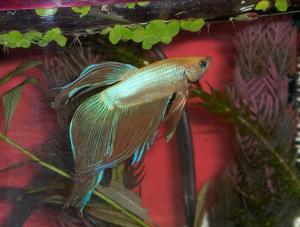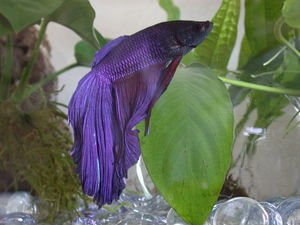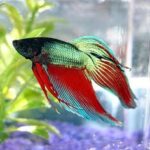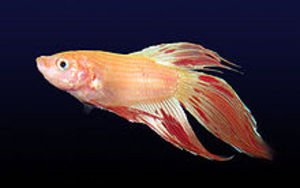The bettas we find in pet stores and in the retail market only represent a fraction of the various types of bettas that can be found. Some types are rather common and are likely to be found in these types of stores. Others may require the help of a betta breeder.
Betta splendens is the most common type of betta although others may prove to be quite easy to find. For the purpose of this article, we’ll focus on the betta splendens.
The most obvious difference among bettas is the coloration. Typically we can find various shades of blue, red, green and even white quite easily. There are many other colors and color combinations that can be found. In fact, some of these may be right in front of you.
When browsing through bettas in tanks or in those sad tiny cups, the colors can be deceiving. Many times, their colors are diluted or they’ve lost some of their color due to their living conditions. In a healthy environment, they can prove to be quite surprising and change their appearance.
For example, I once purchased a female betta from a large retail chain due to the fact that I felt extreme pity for her. She was alive, but barely so I decided to give her a chance. She was grey with three horizontal brownish-black stripes on either side of her body. As time went on in her designated tank in my home, she became healthy and started to change her coloration completely. She went from a drab sickly grey to a light whitish body with bright red fins, otherwise known as a Cambodian.
Hundreds of color combinations exist. Listed here are just a few: black, blue, royal blue, turquoise, purple, red, yellow, cellophane, orange, white, opaque, copper, gold, apricot, peach, albino and chocolate.
Within all of these colors, patterns and combinations are often named for betta labeling. Just a few of these include bi-color, marble, Cambodian, grizzled, multi-color, butterfly and speckled. Most of these patterns can apply to just about any of the colors.
The color varieties alone make bettas one of the most varied fish available. On top of colors and color combination, these fish also vary in tail types. Most often the fish sold in large stores fall under the Veil Tail category. These are the bettas that most folks are familiar with. They’ve got a long flowing tail that droops slightly.
Another tail type that can sometimes be found in the retail market and from betta breeders include Half Moons, which is a tail that forms a fan or half circle of 180 degrees extending from the top to the bottom of the fish’s body. The Delta Tail is a tail type that extends outward and forms an angle of about 130 degrees.
The Crown Tail has become increasingly popular and more readily available over recent years. The tails on these fish form a round, fanlike appearance. They then have extended rays that slightly resemble long teeth on a comb.
The Double Tail is one where the tail fin is divided into two portions giving the fish the appearance of having two tails.
Short fin or short tail bettas can be found at times. These fish resemble how bettas look in the wild. Typically, male bettas have long flowing fins while females have shorter fins. In the wild however, males have very short fins that are very similar to that of the female bettas we are familiar with today. Among other types of bettas it’s common to find short finned males, but generally with the betta splendens this is the general rule of thumb.
Bettas can further be identified through genetics and a particular type of fry can be produced by understanding these genetics and knowing which fish together. However, for basic identification purposes, the above guidelines may prove helpful. It’s important to remember that all of these have similar personalities and behaviors. Even the most commonly colored veil tail betta makes just as good a pet as a fancy variety. But it’s still fun to learn these variations which one might be living in our own home.






